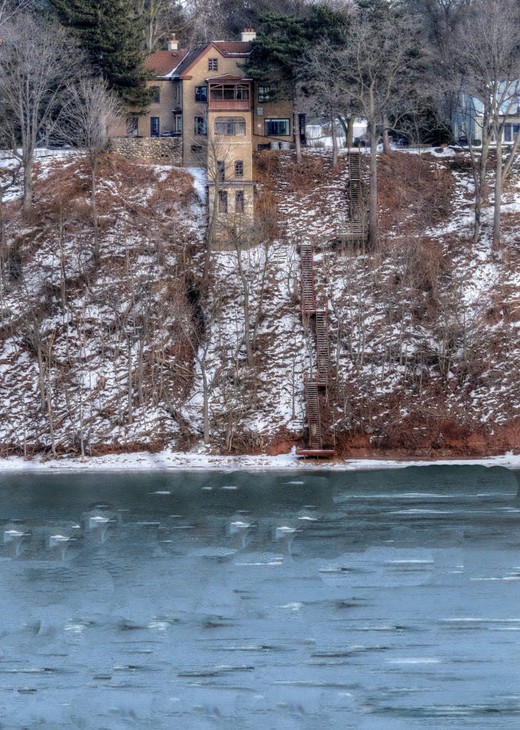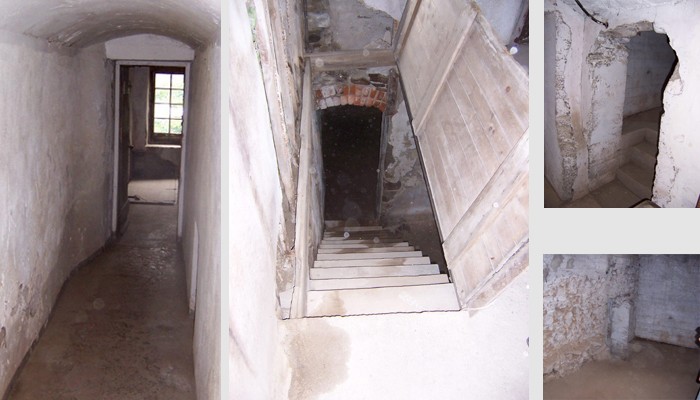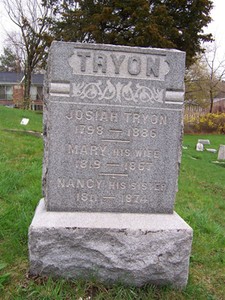Tryon's Folly (Underground Railroad)
Introduction
Text-to-speech Audio
Upstate New York is dotted with homes and barns that were part of the Underground Railroad. This is particularly true along the Niagara River which was, for many escaped slaves, the last barrier between themselves and freedom. In Lewiston, a curiously built house known as “Tryon’s Folly” Known variously as the House of the 4 Cellars or the House of the 7 Cellars, the home, which was built by Amos Tryon, was made famous by his brother, Josiah, who helped an untold number of runaway slaves cross the river into Canada. The home is currently a private residence and is not open to the public.
Images
Tyron's Folly, with the connecting basements seen from the river

A view of the basements

Josiah Tryon's grave

Backstory and Context
Text-to-speech Audio
For many years in the mid-1800s, Lewiston, New York, was an important stop on the Underground Railroad. Located along the Niagara River across from Canada, Lewiston was often the last stop for escaped slaves who hoped to make it to Canada and freedom. Lewiston residents, like those of numerous towns in upstate New York, were adamantly opposed to slavery and were committed to resisting it whenever possible.
The house known as Tryon’s Folly was built in 1830 by Amos Tryon, the older brother of Josiah. The home was intended to house both a business and a residence for Tryon and his wife, Sally, but Sally refused to move from the couple’s existing home. Because of that, and maybe because of the house’s odd construction, it became known by locals as Tryon’s Folly. Viewed from the street, Tryon’s Folly looks like a normal house. It’s only when viewed from the river that the home’s strange construction can be seen. The home was built with multi-level connecting basements (either 4 or 7, depending on how they are counted) down the steep riverbank.
Amos’s brother, Josiah, was a tailor in Lewiston with a shop located on Center Street, although the building is no longer standing. Given the secretive nature of the Underground Railroad, written records from those who were involved in it are virtually nonexistent, but according to local lore, Tryon, an abolitionist, befriended slave catchers when they came to Lewiston. Using his skills as a tailor, he made them brightly colored jackets as gifts. But there was more to Tryon’s jackets than met the eye; because of their distinctive bright colors, locals knew the wearers were slavecatchers and not to talk to them about the activities of the Underground Railroad.
When Sally Tryon refused to live in the new house that her husband built, Josiah realized that the home’s peculiar construction made it an ideal place to hide runaway slaves and then get them safely over the river to Canada. It is unknown how many slaves Josiah Tryon guided to freedom, but the basement is large enough to accommodate perhaps as many as 30 people at once. It’s possible that Josiah Tryon helped get dozens of formerly enslaved people into Canada.
The home, which is a private residence and not open to the public, was damaged by a fire in 1900 and a new structure was built on the site in 1915.
Sources
Andres, Jane . The Seldom Heard Story of Tryon's Folly, Niagara on the Lake Local . February 24th 2021. Accessed June 3rd 2022. https://notllocal.com/2021/02/24/seldom-heard-story-of-tryons-folly/.
Freedom Crossing, Historic Lewiston, New York . Accessed June 3rd 2022. https://historiclewiston.org/freedomcrossing/.
